Keys to Choosing a Good Comforter
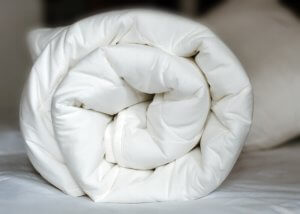
The comforter is one of the essential bedding items for the long winter months. It protects you from the cold during the winter season. You also want this type of bedding to last for several years, which means you should choose it with care. Below, we’ll show you a few suggestions on choosing a good comforter for your bed, and what characteristics to look for.
1. Comforter size
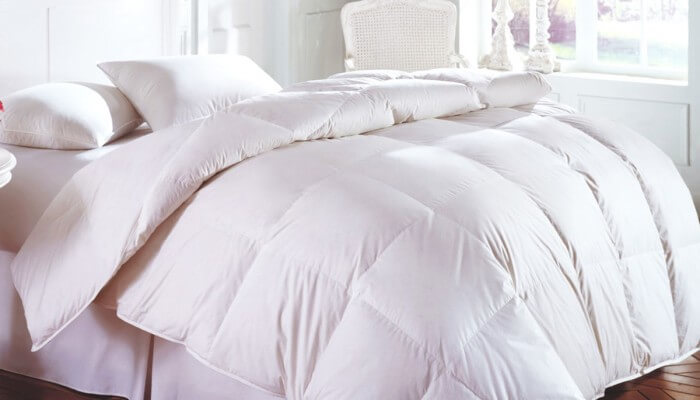
Although this might seem obvious, it’s an important aspect that you should consider before buying. It might have happened to you that you bought a comforter but when you got home it was smaller than you thought for your bed.
Don’t worry, you don’t need to get out the tape measure to measure your bed. But here’s a rough guide to the size of comforter you’ll need vs the size of your bed.
- Single bed measuring 35 x 75 in: comforter of 60 x 85 in.
- For a twin bed of 39 x 75 in: you need a comforter of 70 x 85 in.
- A full-size bed of 54 x 75 in: comforter of 86 x 91 in.
- Queen bed size 60 x 80 in: comforter of 92 x 96 in.
- For a big king bed of 76 x 80 in: a comforter of 108 x 96 in.
- The biggest size, Cal king bed 72 x 84 in: comforter of 104 x 100 in.
2. Insulating capacity
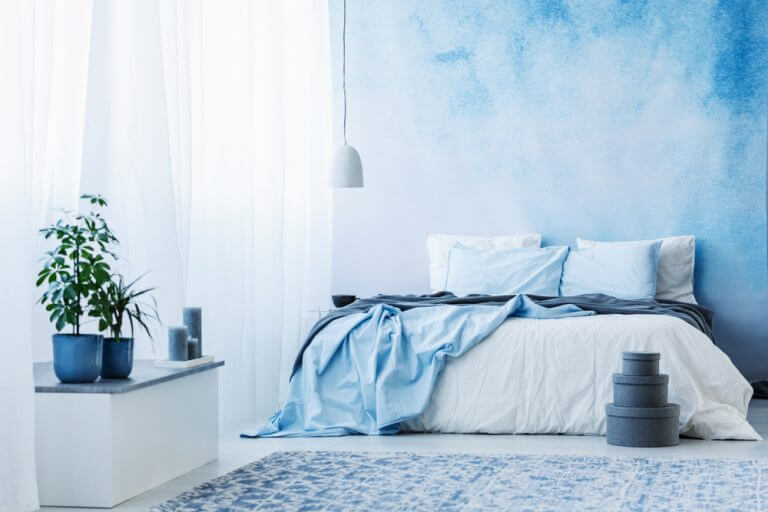
The main purpose of a good comforter is to insulate you from the cold. This capacity will depend greatly on the quality and quantity of the fill (or batting) the comforter has inside it.
The way the comforter is divided into sections also goes hand in hand with its insulating capacity. The most common type is wide squares that hold the filling in place. This way, each section of the comforter will trap the heat in between the squares and will keep you warm.
These sections distribute the heat evenly so you don’t get cooler and warmer spots throughout the comforter.
3. A good quality comforter – choosing a filling
Choosing a good filling is a key aspect of any good comforter, as we mentioned in the previous point. To choose an adequate fill, you should know that there are two different types of comforter fill: natural and synthetic.
Natural filling
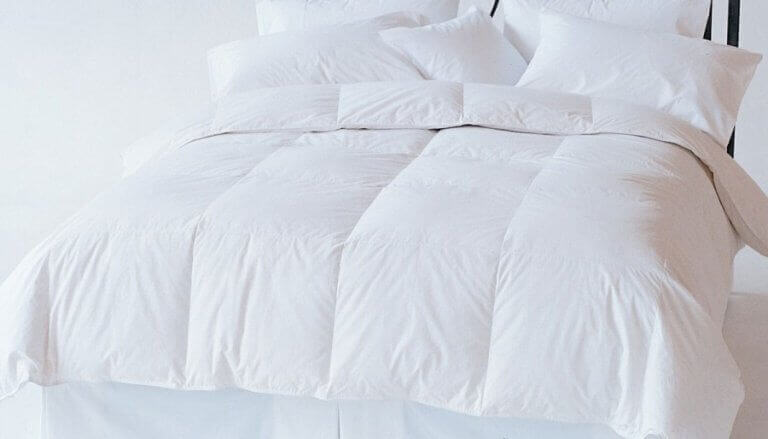
Natural fillings are those such as feathers or down. If the price isn’t a restricting factor for you, we recommend that you choose a down comforter. These are the best kind for insulation from the cold. Down keeps the heat in and even absorbs humidity better than all the other different kinds of filling.
The disadvantage to a down comforter is that you generally need to air out the comforter each morning. This is due to the humidity that it absorbs as we just mentioned so you need to let air circulate so it doesn’t go moldy.
Another aspect you should take into consideration is that some people can have allergies to down and feathers.
If you’re looking for a comforter at a more reasonable price, and if you aren’t worried about having a particularly high degree of insulating capability, you could go for a comforter with feathers as the fill. They aren’t as heavy as down comforters either.
Just make sure that when it’s time to wash your comforter, you dry clean it instead of throwing it into the washing machine. These types of comforters generally have to be dry cleaned so the feathers or down don’t get damaged.
Synthetic filling
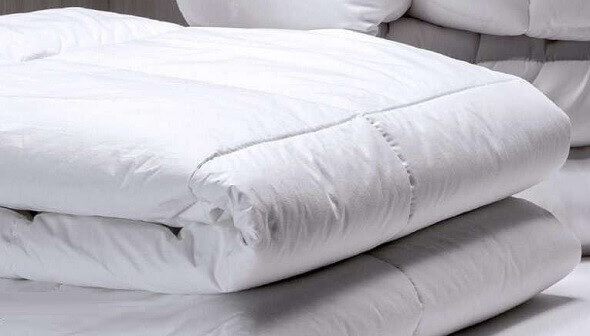
If you don’t want a comforter with natural filling because of allergies or for some other reason, you have the option of choosing a good comforter with synthetic filling. Polyester fillings are the most common and cost-effective.
One difference between natural and synthetic fillings is that the synthetic option is much cheaper and you can generally wash them in your washing machine. Make sure to check the label. They also aren’t as warm as natural fillings, which may be an advantage depending on the degree of cold where you live.
This, of course, may not suit you personally, as some people are more sensitive to cold than others and need more protection. Or it may be that you live somewhere a little warmer or might not need to be as well covered up during the night.
4. Choosing a good comforter – density
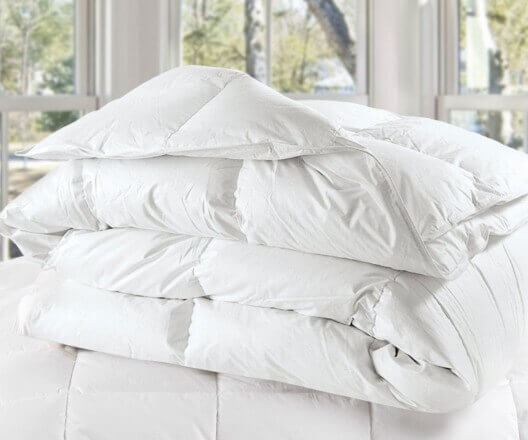
The density of a comforter, although it might seem a little complicated to understand, is quite simple. The higher the density, the warmer the comforter will be. This is also known as fill power, or the amount of space that one ounce of filling occupies.
The density is closely related to the type of filling we mentioned above. If you’re somewhat sensitive to the cold, you’ll need a higher filling density. Or if on the other hand, you tend to overheat while sleeping, you should choose a lower density.
Here’s a guide to comforter fill power to help you in choosing a good one that will suit you:
- The lightest density available is around 400. This is suitable for warmer climates or summer use.
- An average fill power is around 400 to 600. It’s ideal for use in homes with heating.
- The thickest comforters are around 600 and above. These are mainly for houses that don’t have heating during the night in winter, or for people who are sensitive to the cold.
The comforter is one of the essential bedding items for the long winter months. It protects you from the cold during the winter season. You also want this type of bedding to last for several years, which means you should choose it with care. Below, we’ll show you a few suggestions on choosing a good comforter for your bed, and what characteristics to look for.
1. Comforter size

Although this might seem obvious, it’s an important aspect that you should consider before buying. It might have happened to you that you bought a comforter but when you got home it was smaller than you thought for your bed.
Don’t worry, you don’t need to get out the tape measure to measure your bed. But here’s a rough guide to the size of comforter you’ll need vs the size of your bed.
- Single bed measuring 35 x 75 in: comforter of 60 x 85 in.
- For a twin bed of 39 x 75 in: you need a comforter of 70 x 85 in.
- A full-size bed of 54 x 75 in: comforter of 86 x 91 in.
- Queen bed size 60 x 80 in: comforter of 92 x 96 in.
- For a big king bed of 76 x 80 in: a comforter of 108 x 96 in.
- The biggest size, Cal king bed 72 x 84 in: comforter of 104 x 100 in.
2. Insulating capacity

The main purpose of a good comforter is to insulate you from the cold. This capacity will depend greatly on the quality and quantity of the fill (or batting) the comforter has inside it.
The way the comforter is divided into sections also goes hand in hand with its insulating capacity. The most common type is wide squares that hold the filling in place. This way, each section of the comforter will trap the heat in between the squares and will keep you warm.
These sections distribute the heat evenly so you don’t get cooler and warmer spots throughout the comforter.
3. A good quality comforter – choosing a filling
Choosing a good filling is a key aspect of any good comforter, as we mentioned in the previous point. To choose an adequate fill, you should know that there are two different types of comforter fill: natural and synthetic.
Natural filling

Natural fillings are those such as feathers or down. If the price isn’t a restricting factor for you, we recommend that you choose a down comforter. These are the best kind for insulation from the cold. Down keeps the heat in and even absorbs humidity better than all the other different kinds of filling.
The disadvantage to a down comforter is that you generally need to air out the comforter each morning. This is due to the humidity that it absorbs as we just mentioned so you need to let air circulate so it doesn’t go moldy.
Another aspect you should take into consideration is that some people can have allergies to down and feathers.
If you’re looking for a comforter at a more reasonable price, and if you aren’t worried about having a particularly high degree of insulating capability, you could go for a comforter with feathers as the fill. They aren’t as heavy as down comforters either.
Just make sure that when it’s time to wash your comforter, you dry clean it instead of throwing it into the washing machine. These types of comforters generally have to be dry cleaned so the feathers or down don’t get damaged.
Synthetic filling

If you don’t want a comforter with natural filling because of allergies or for some other reason, you have the option of choosing a good comforter with synthetic filling. Polyester fillings are the most common and cost-effective.
One difference between natural and synthetic fillings is that the synthetic option is much cheaper and you can generally wash them in your washing machine. Make sure to check the label. They also aren’t as warm as natural fillings, which may be an advantage depending on the degree of cold where you live.
This, of course, may not suit you personally, as some people are more sensitive to cold than others and need more protection. Or it may be that you live somewhere a little warmer or might not need to be as well covered up during the night.
4. Choosing a good comforter – density

The density of a comforter, although it might seem a little complicated to understand, is quite simple. The higher the density, the warmer the comforter will be. This is also known as fill power, or the amount of space that one ounce of filling occupies.
The density is closely related to the type of filling we mentioned above. If you’re somewhat sensitive to the cold, you’ll need a higher filling density. Or if on the other hand, you tend to overheat while sleeping, you should choose a lower density.
Here’s a guide to comforter fill power to help you in choosing a good one that will suit you:
- The lightest density available is around 400. This is suitable for warmer climates or summer use.
- An average fill power is around 400 to 600. It’s ideal for use in homes with heating.
- The thickest comforters are around 600 and above. These are mainly for houses that don’t have heating during the night in winter, or for people who are sensitive to the cold.







